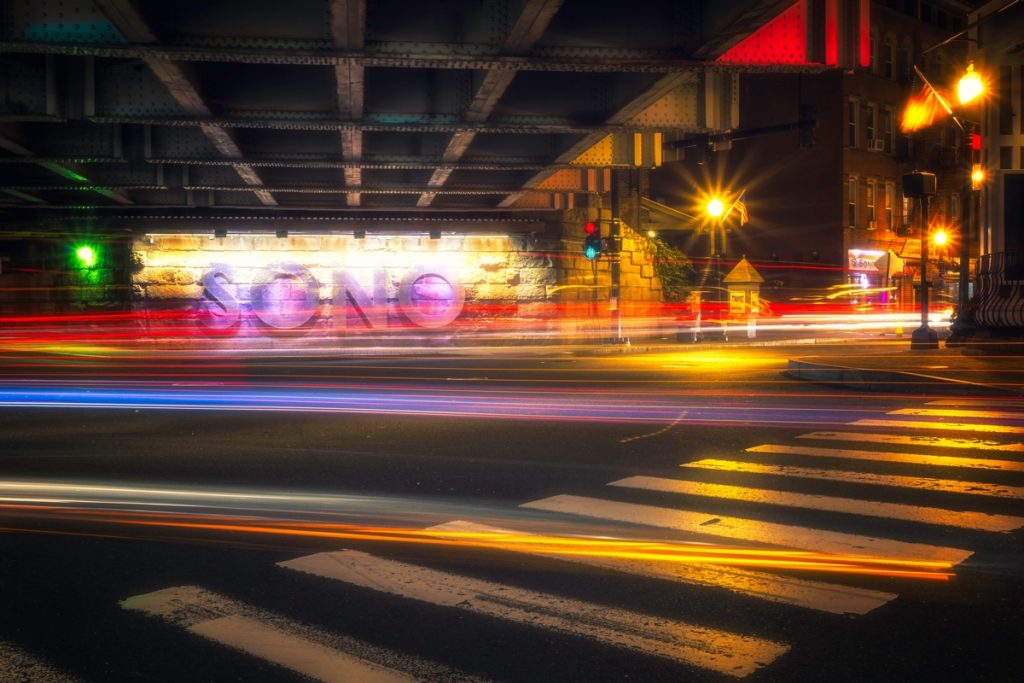May 29, 2018
 Transit oriented development (TOD) is development that looks to create compact, pedestrian-oriented, mixed-use communities centered around high quality public transit systems. This type of development is designed to revitalize cities and their neighborhoods, and provides a number of benefits. Below are some key characteristics of TOD, its benefits and how it is being implemented right here in Norwalk, CT.
Transit oriented development (TOD) is development that looks to create compact, pedestrian-oriented, mixed-use communities centered around high quality public transit systems. This type of development is designed to revitalize cities and their neighborhoods, and provides a number of benefits. Below are some key characteristics of TOD, its benefits and how it is being implemented right here in Norwalk, CT.
The last century saw the growth of the suburbs, with greater and greater sprawl outside of cities, and transportation emphasizing cars and highways. The trend this century is moving toward existing cities. Millennials, soon to be the largest generation – surpassing baby boomers – tend to stay or move into more dense, urban, mixed-use neighborhoods. Read more about that here. Close proximity to shopping, theater, restaurants and transit is important to them. In addition, transportation is focusing on more sustainable models of public transportation.
Characteristics of Transit Oriented Development
Transit oriented development is the perfect solution for these trends. So what exactly does TOD look like? Here are five key characteristics:
Accessible Public Transportation
The term transit-oriented, explains it all. The neighborhood has quality public transit facilities -trains, buses, light rail -as a prominent feature or center of the community. Most of the housing is close to the transit center (ideally within a 10-minute walking distance), decreasing sprawl and promoting compactness.
Compactness/High Density
The TOD area has a mixture of uses in close proximity including residences, offices, retail and civic facilities. There are even certain retail outlets conveniently located at the transit stations serving commuters such as, cafes, grocery and dry cleaners.
Walkability
With compactness comes easy walking distance to most amenities. This makes a priority of having a neighborhood with a walkable design for pedestrians. Streetscapes, including wide sidewalks, crosswalks and lighting, are built with the pedestrian in mind. Shying away from the traditional car-centric neighborhood.
Bikeability
TOD design also includes making it easy to use bicycles and scooters by having bike lanes and ride-in bicycle parking areas within the transit stations. A plus would be a bikeshare rental system and network integrated in conjunction with public transit facilities.
Easy Parking
Parking is carefully located and managed within the neighborhood, not to encourage cars in place of public transport, but to encourage visitors from outside the neighborhood and economic development. Not yards of parking lots in the center, but shared parking structures on the outskirts of the TOD area. This encourages use of other transit options including bikes, light rail, and walking.
Benefits Of Transit Oriented Development
Creating new TOD communities and promoting existing dense, walkable neighborhoods bring about a number of benefits for cities, people, and the environment. Here are just a few things TOD is good for:
- Environment – Reduces the need for driving, increases transit ridership and lowers energy consumption, pollution and environmental damage.
- Health – more walking, and less stress makes for healthier people
- Safety – Reduced traffic congestion, car accidents and injuries
- Economy –with people living and working in the neighborhood, it increases foot traffic and customers for area businesses
- Municipalities – Less expensive than building roads and sprawl, more taxable income from the increase in residences and businesses.
- Quality of life – a dense, compact neighborhood brings places to live, work, and play – all within easy reach
TOD in Norwalk
As part of Norwalk’s efforts to revitalize urban neighborhoods, it has designated a TOD area in South Norwalk, centered on the South Norwalk Railroad Station. A transit-oriented development plan is in place, encouraging a mixed-use, mixed-income district with adequate amenities, ease of getting around, public safety requirements, and open space.
Part of this plan allows a higher residential density closer to the South Norwalk Rail Station. Norwalk’s guidelines for both private development and public infrastructure ensure new development is consistent with the goals for a walkable, mixed-use district that is connected to the rail station, the waterfront, and the surrounding residential neighborhoods. To maintain a diverse neighborhood, a mixture of housing is encouraged, including low to moderate-income housing. In addition, zoning helps to preserve and protect the historic character of the neighborhood. Infrastructure improvements are also planned including roadway, parking, and sidewalk enhancements.
Recent initiatives toward the TOD goal include, a privately built 66-unit apartment building, the SoNo Pearl and a hotel, the SoNo Residence Inn both located within walking distance on the South Norwalk Train Station. Work has begun on the Washington Village Transformation Plan, part of the federally funded Choice Neighborhoods Grant, centered on mixed income housing near Day Street and Water Street.
Transit oriented development capitalizes on the increasingly popular trend toward living in cities by creating cohesive and attractive environments in which to live, work, shop, visit, and enjoy in neighborhoods around major public transit hubs. The emphasis on renewing these areas will encourage sound growth and development of the community – a win-win for municipalities, businesses and people.




